
Durbar Square: The Heart of Kathmandu's Heritage
Explore Durbar Square in Kathmandu, a UNESCO World Heritage site brimming with ancient temples, palaces, and the vibrant spirit of Nepalese culture.
Nestled in the vibrant heart of Kathmandu, Durbar Square stands as a testament to Nepal's rich history and cultural heritage. This UNESCO World Heritage site is a labyrinth of palaces, courtyards, and temples that date back as far as the 12th century. As you wander through the square, you'll be transported back in time, surrounded by intricate wood carvings, ancient statues, and the bustling energy of local life. Durbar Square is not just a historical site; it's a living, breathing part of Kathmandu. The square is often filled with local artisans, vendors, and ceremonies, offering visitors a unique glimpse into the daily lives of the people who call this city home. The vibrant colors, sounds, and smells create a sensory experience that is both mesmerizing and unforgettable. One of the highlights of Durbar Square is the Hanuman Dhoka Palace Complex, a sprawling structure that was once the royal residence of the Malla kings and later the Shah dynasty. Don't miss the Taleju Temple, a towering pagoda dedicated to the goddess Taleju, which is only open to Hindus. Another must-see is the Kumari Ghar, the residence of the living goddess Kumari, where you may be fortunate enough to catch a glimpse of her during one of her rare public appearances.
Local tips in Durbar Square
- Visit early in the morning to avoid crowds and to witness the square's daily rituals.
- Wear comfortable shoes as the area is best explored on foot.
- Carry some local currency for small purchases and donations at temples.
- Hire a local guide to gain deeper insights into the history and significance of the monuments.
- Respect local customs, especially when visiting religious sites; dress modestly and remove your shoes when required.
Durbar Square: The Heart of Kathmandu's Heritage
Nestled in the vibrant heart of Kathmandu, Durbar Square stands as a testament to Nepal's rich history and cultural heritage. This UNESCO World Heritage site is a labyrinth of palaces, courtyards, and temples that date back as far as the 12th century. As you wander through the square, you'll be transported back in time, surrounded by intricate wood carvings, ancient statues, and the bustling energy of local life. Durbar Square is not just a historical site; it's a living, breathing part of Kathmandu. The square is often filled with local artisans, vendors, and ceremonies, offering visitors a unique glimpse into the daily lives of the people who call this city home. The vibrant colors, sounds, and smells create a sensory experience that is both mesmerizing and unforgettable. One of the highlights of Durbar Square is the Hanuman Dhoka Palace Complex, a sprawling structure that was once the royal residence of the Malla kings and later the Shah dynasty. Don't miss the Taleju Temple, a towering pagoda dedicated to the goddess Taleju, which is only open to Hindus. Another must-see is the Kumari Ghar, the residence of the living goddess Kumari, where you may be fortunate enough to catch a glimpse of her during one of her rare public appearances.
Iconic landmarks you can’t miss
Kathmandu Durbar Square
Discover the historical richness and architectural beauty of Kathmandu Durbar Square, a UNESCO World Heritage Site in the heart of Nepal's capital city.

Hanuman Dhoka
Experience the historical grandeur of Hanuman Dhoka, Kathmandu's royal palace of the Malla kings, a UNESCO World Heritage site rich in culture and architecture.

Nasal Chowk
Experience the historical splendor of Nasal Chowk, a captivating landmark in Kathmandu that showcases the city's rich cultural heritage.

Kumari Ghar
Discover the sacred Kumari Ghar in Kathmandu, a vibrant temple dedicated to the Living Goddess, rich in culture and steeped in history.

Jagannath Temple
Experience the spiritual essence and vibrant culture at Jagannath Temple, a must-visit Hindu temple in Kathmandu, Nepal.

Nine Storey Palace
Discover the grandeur of the Nine Storey Palace in Kathmandu, a historical landmark showcasing Nepal's rich cultural heritage and architectural brilliance.

Mahendra Museum
Explore the rich cultural heritage of Nepal at Mahendra Museum, a captivating destination in the heart of Kathmandu showcasing art and artifacts.
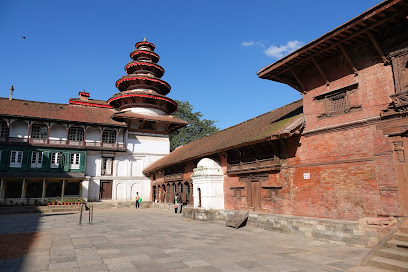
Basantapur Durbar(Nau-Talle Durbar)
Explore Basantapur Durbar, a UNESCO World Heritage site showcasing Nepal's royal heritage and exquisite architecture in the heart of Kathmandu.

Bhandarkhal
Explore Bhandarkhal, a historical treasure near Kathmandu Durbar Square, where the past meets tranquility amidst stunning architecture and local culture.

King Pratap Malla Column
Explore the King Pratap Malla Column in Kathmandu, a stunning historical landmark celebrating Nepal's rich cultural heritage and royal legacy.

Unmissable attractions to see
Kumari Ghar
Discover the enchanting Kumari Ghar, home of the Living Goddess, and immerse yourself in the rich spiritual and cultural heritage of Kathmandu.

Jagannath Temple
Explore the spiritual and cultural heart of Kathmandu at Jagannath Temple, a stunning example of Hindu architecture and devotion.
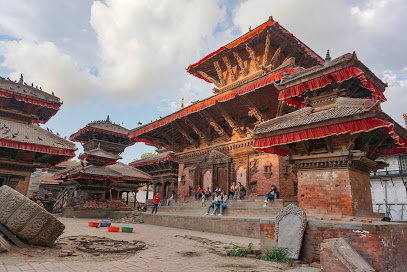
Kageshwor Mahadev Temple
Discover the spiritual essence of Kathmandu at Kageshwor Mahadev Temple, a magnificent Hindu shrine rich in history and cultural significance.

Mahendra Museum
Explore the fascinating heritage of Nepal at Mahendra Museum, a cultural treasure in Kathmandu showcasing rich historical artifacts and exhibits.

Basantapur dabali
Explore Basantapur Dabali, a vibrant cultural center in Kathmandu, where history, art, and local life converge in a stunning UNESCO World Heritage site.

Lohan Chowk
Discover Lohan Chowk, a serene square in Kathmandu, where history meets tranquility in the heart of Nepal's vibrant culture.

Mul Chowk
Explore Mul Chowk in Kathmandu, a stunning courtyard brimming with intricate Newari architecture and rich cultural heritage.

Essential places to dine
Third Eye Restaurant
Experience the rich flavors of Indian and Nepalese cuisine at Third Eye Restaurant in Kathmandu's vibrant Thamel district.

Mezze by Roadhouse
Experience the fusion of local flavors and international cuisine at Mezze by Roadhouse in the heart of Kathmandu.
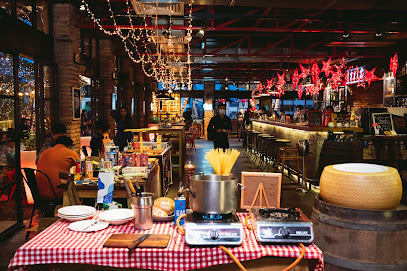
Kathmandu Grill Restaurant
Discover the vibrant flavors of Nepal at Kathmandu Grill Restaurant, where culinary traditions meet contemporary tastes in the heart of Thamel.

Alice Restaurant
Discover the culinary wonders at Alice Restaurant in Kathmandu - where local flavors meet global cuisine.

The Old House
Discover culinary excellence at The Old House in Kathmandu, where tradition meets innovation in every dish.

Places Restaurant and Bar
Discover flavorful vegetarian dishes at Places Restaurant and Bar in Kathmandu's vibrant Thamel district - a true culinary delight!

Nepalaya Rooftop Restaurant
Experience breathtaking views and authentic flavors at Nepalaya Rooftop Restaurant in Kathmandu's vibrant Thamel district.

Revolution Cafe
Savor Asian fusion delights and European classics at Revolution Cafe in Kathmandu—where culinary artistry meets vibrant entertainment.
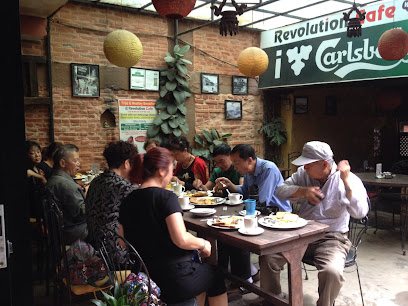
Graveaty Restaurant and Bar
Discover culinary delights at Graveaty Restaurant and Bar in Thamel, where local flavors meet warm hospitality in Kathmandu.

Yasumi Japanese Restaurant
Discover authentic Japanese flavors at Yasumi Restaurant in Kathmandu's Durbar Mall - a culinary oasis for sushi lovers and enthusiasts.
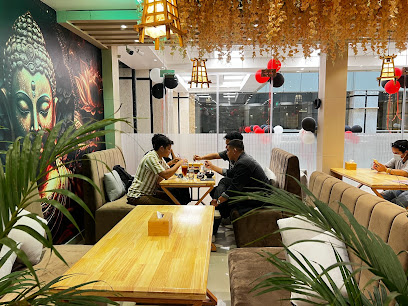
Markets, malls and hidden boutiques
MOMENTS OUTLET - BEST WATCHES & SUNGLASS SHOP IN NEPAL
Explore MOMENTS OUTLET in Kathmandu for an exquisite selection of watches, sunglasses, and fashion accessories that capture the essence of Nepal’s vibrant culture.
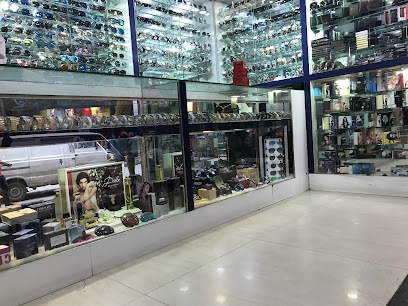
Bhumi's
Explore Bhumi's in Kathmandu for unique women's fashion that blends tradition with modern style, tailored just for you.
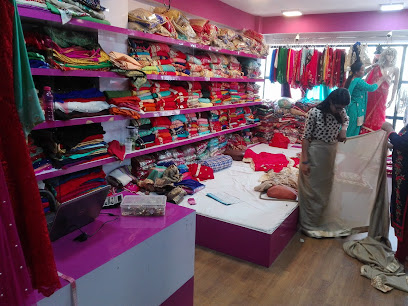
NATRAJ the boutique
Explore the vibrant world of sarees at NATRAJ the Boutique in Kathmandu, where tradition meets contemporary elegance in every stitch.

Kumari Gift & Art Gallery
Explore Kumari Gift & Art Gallery in Kathmandu for unique Nepali art and handcrafted gifts that embody the rich culture and creativity of Nepal.

Unique shop
Discover Unique Shop in Kathmandu - A treasure trove of Nepali craftsmanship and contemporary fashion awaits you.
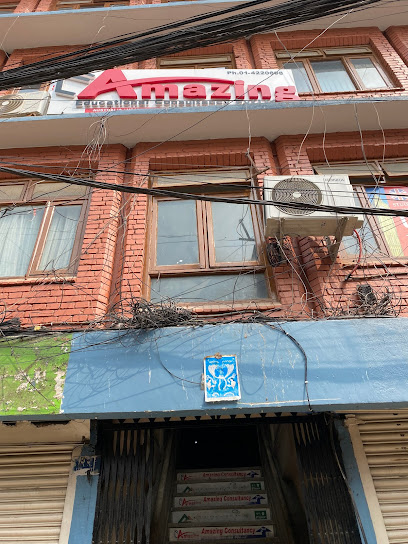
CASHMERE HOUSE
Explore Cashmere House in Kathmandu for an exquisite selection of authentic cashmere garments and accessories, embodying Nepal's rich textile heritage.

WELCOME PASHMINA HOUSE
Explore authentic pashmina at Welcome Pashmina House in Kathmandu – a treasure trove of luxury textiles that embody Nepal's rich cultural heritage.

Center Pashmina House & Souvenir Shop
Explore authentic Nepali craftsmanship at Center Pashmina House, your destination for exquisite pashmina and unique souvenirs in Kathmandu.

Unique Station
Discover Unique Station, Kathmandu's premier clothing store, blending local craftsmanship with modern styles in a vibrant shopping experience.

Souvenirs Nepal
Discover authentic Nepali crafts and art at Souvenirs Nepal, a cultural gem in Kathmandu near the historic Durbar Square.

Essential bars & hidden hideouts
Purple Haze Rock Bar
Experience the vibrant nightlife at Purple Haze Rock Bar in Thamel, Kathmandu, known for its lively atmosphere, rock music, and extensive drink selection.

Everest Irish Pub
Experience the best of Irish hospitality in the heart of Kathmandu at Everest Irish Pub, where delicious food and drinks await.

Octave Kathmandu
Discover the lively ambiance and unique drink offerings at Octave Kathmandu, a top bar destination for tourists and locals alike.

Durbar Lounge
Experience the essence of Kathmandu nightlife at Durbar Lounge, where sophistication meets local culture in a stylish setting.

The Bar Bar Black Sip
Experience the vibrant nightlife at The Bar Bar Black Sip in Thamel, Kathmandu, where great drinks, music, and a welcoming atmosphere await.

London Pub
Experience the lively atmosphere of London Pub in Kathmandu, where delicious food and drinks meet local charm and hospitality.

Namaste Pub
Discover the heart of Kathmandu's nightlife at Namaste Pub, where cocktails, fine dining, and live music create an unforgettable experience.
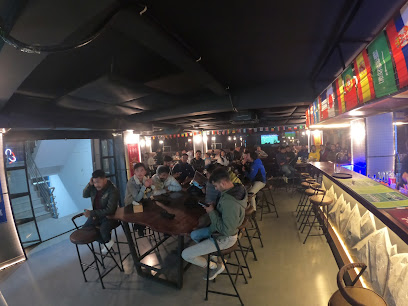
Casa Lounge Bar
Discover the charm of Casa Lounge Bar in Kathmandu, where relaxing vibes meet a diverse selection of drinks in a cozy setting.

The Shot Station - Best Pub in Kathmandu
Discover the vibrant nightlife at The Shot Station, Kathmandu's iconic pub offering an extensive drink menu and a lively atmosphere.

Old Eden Hiphop Bar
Experience the vibrant nightlife at Old Eden Hiphop Bar in Kathmandu, where music and culture come alive in a lively atmosphere.

Local Phrases
-
- Helloनमस्ते
[namaste] - Goodbyeछोड्नुहोस्
[chhodnuhos] - Yesहो
[ho] - Noहोइन
[hoin] - Please/You're welcomeकृपया
[kripya] - Thank youधन्यवाद
[dhanyavad] - Excuse me/Sorryमाफ गर्नुहोस्
[maaph garnuhos] - How are you?तपाईंलाई कस्तो छ?
[tapailai kasto chha?] - Fine. And you?राम्रो छ। तपाईंलाई?
[ramro chha. tapailai?] - Do you speak English?तिमी अंग्रेजी बोल्नुहुन्छ?
[timi angreji bolnuhunchha?] - I don't understandमलाई सम्झिन्छैन
[malai samjhinchhain]
- Helloनमस्ते
-
- I'd like to see the menu, pleaseकृपया मेनु हेर्न चाहन्छु
[kripya menu hern chahanchu] - I don't eat meatम भांसामा खान्न
[ma bhasama khanna] - Cheers!चियर्स!
[chears!] - I would like to pay, pleaseकृपया म पर्न चाहन्छु
[kripya ma parn chahanchu]
- I'd like to see the menu, pleaseकृपया मेनु हेर्न चाहन्छु
-
- Help!मदत!
[madat!] - Go away!दूर हुनुहोस्!
[dur hunuhos!] - Call the Police!प्रहरीलाई बोलाउनुहोस्!
[praharilai bulaunuhos!] - Call a doctor!डाक्टरलाई बोलाउनुहोस्!
[daktarlai bulaunuhos!] - I'm lostमलाई हराएको छ
[malai haraeko cha] - I'm illमलाई बिरामी छ
[malai birami cha]
- Help!मदत!
-
- I'd like to buy...म खरिद गर्न चाहन्छु...
[ma kharid garn chahanchu...] - I'm just lookingम सिर्जना गरिरहेको छु
[ma sirjana gari raheko chhu] - How much is it?यो कति हो?
[yo kati ho?] - That's too expensiveत्यो धेरै महँगो छ
[tyo dherai mahango cha] - Can you lower the price?के तिमी मूल्य हाल्न सक्छौ?
[ke timi mulya haln sakchau?]
- I'd like to buy...म खरिद गर्न चाहन्छु...
-
- What time is it?कति बजेको छ?
[kati bajeko cha?] - It's one o'clockएक बजे छ
[ek baje cha] - Half past (10)दस ओटा देखि अर्ध बजे
[das ota dekhi ardha baje] - Morningबिहान
[bihan] - Afternoonदिउँसो
[diunso] - Eveningसाँझ
[sanh] - Yesterdayहिजो
[hijo] - Todayआज
[aaj] - Tomorrowभोलि
[bholi] - 1एक
[ek] - 2दुई
[dui] - 3तीन
[tin] - 4चार
[char] - 5पाँच
[panch] - 6छ
[chha] - 7सात
[saat] - 8आठ
[aath] - 9नौ
[nau] - 10दस
[das]
- What time is it?कति बजेको छ?
-
- Where's a/the...?कहाँ छ...?
[kaha chha...?] - What's the address?ठेगाना के हो?
[thegana ke ho?] - Can you show me (on the map)?के तिमीले मलाई देखाउन सक्छौ (नक्सामा)?
[ke timile malai dekhaun sakchau (naksama)?] - When's the next (bus)?अर्को (बस) कहिले जान्छ?
[arko (bas) kahile janchha?] - A ticket (to ....)एक टिकट (....मा)
[ek ticket (....ma)]
- Where's a/the...?कहाँ छ...?
History of Durbar Square
-
Durbar Square is at the heart of Kathmandu, a site that has been central to the valley's civilization since the Licchavi period (around 400-750 AD). The Licchavis established Kathmandu as a significant trade route, which led to the growth of settlements and the development of architecture, art, and culture that can still be seen today.
-
During the Malla dynasty (12th to 18th centuries), Durbar Square became a hub of culture and politics. The Malla kings commissioned the construction of several temples, palaces, and courtyards, including the iconic Hanuman Dhoka Palace and the intricately carved Kasthamandap, which showcases the craftsmanship of that era.
-
The devastating earthquake of 1934 caused significant damage to Durbar Square, destroying many of its historical structures. Following the earthquake, extensive reconstruction efforts were undertaken, which modified some of the original designs but also revitalized the area, allowing it to retain its status as a cultural and historical center.
-
In 1979, Kathmandu Durbar Square was designated as a UNESCO World Heritage Site, recognizing its outstanding architectural and cultural significance. This designation has helped preserve its historical integrity and promoted awareness of its importance in Nepal's rich history, attracting tourists and scholars from around the world.
-
The earthquake that struck Nepal in April 2015 caused extensive damage to Durbar Square, collapsing many of its ancient structures. This prompted an international outpouring of support for restoration efforts, leading to ongoing projects aimed at rebuilding and preserving the square's historical heritage, showcasing the resilience of Kathmandu's cultural identity.
Durbar Square Essentials
-
Durbar Square is centrally located in Kathmandu and easily accessible from various neighborhoods. From Thamel, you can walk (approximately 20 minutes) or take a short taxi ride. If you're coming from the airport, taxis are readily available, and the journey takes around 30 minutes, depending on traffic. Local buses and microbuses also connect to various parts of the city, but they may not drop you off directly at Durbar Square.
-
Durbar Square is pedestrian-friendly, and walking is the best way to explore the area. Bicycles can be rented nearby, but be cautious as traffic can be chaotic. There are no trains or trams in the immediate vicinity. Local taxis and rickshaws are available for trips outside the square. It's advisable to negotiate fares beforehand.
-
Durbar Square is generally safe for tourists, but standard precautions should be taken. Petty theft can occur, particularly in crowded areas. Avoid displaying valuables and be cautious of your belongings. Areas around the square are well-trodden, but it's advisable to avoid the less crowded alleyways at night.
-
In case of emergency, dial 100 for police assistance or 102 for fire emergencies. For medical emergencies, there are several clinics and hospitals in the vicinity. It’s recommended to have travel insurance that covers medical emergencies. Local pharmacies can provide over-the-counter medications for minor ailments.
-
Fashion: Do dress modestly, especially when visiting temples. Avoid wearing revealing clothing. Religion: Do respect local customs; remove shoes before entering religious sites. Public Transport: Do be prepared for crowded conditions on public transport. Don’t eat or drink on buses or in temples. Greetings: Do greet locals with a polite 'Namaste' and a slight bow. Eating & Drinking: Do try local dishes at nearby eateries; don’t drink tap water, opt for bottled water instead.
-
To experience Durbar Square like a local, visit early in the morning when the square is less crowded and the morning light is perfect for photography. Engage with local artisans and shopkeepers, many of whom are happy to share stories about their crafts. Don't miss the opportunity to sample street food, but be cautious about food hygiene. Try to catch a cultural performance or festival if you can, as they provide a glimpse into traditional Nepali life.
Nearby Cities to Durbar Square
-
Things To Do in Patan
-
Things To Do in Bhaktapur
-
Things To Do in Nagarkot
-
Things To Do in Gorkha
-
Things To Do in Bandipur
-
Things To Do in Chitwan
-
Things To Do in Namche Bazaar
-
Things To Do in Pokhara
-
Things To Do in Patna
-
Things To Do in Lumbini
-
Things To Do in Darjeeling
-
Things To Do in Siliguri
-
Things To Do in Gangtok
-
Things To Do in Varanasi
-
Things To Do in Paro












